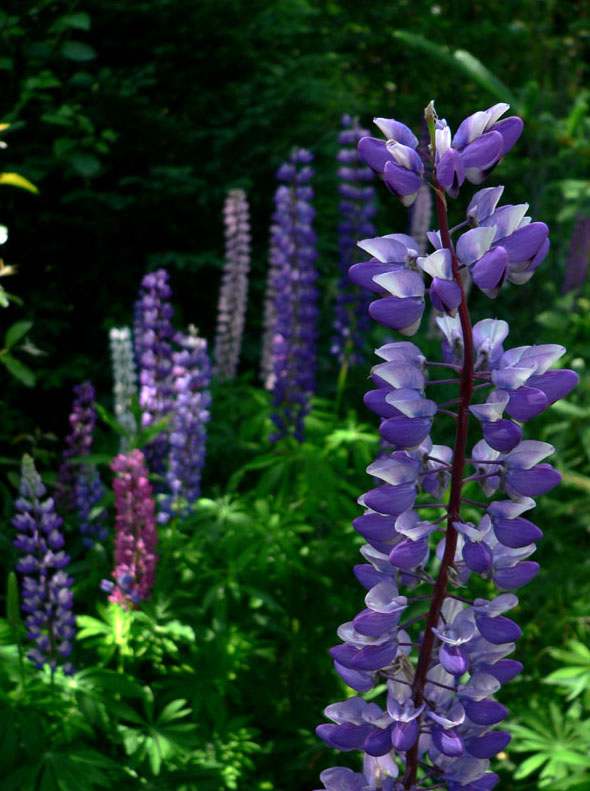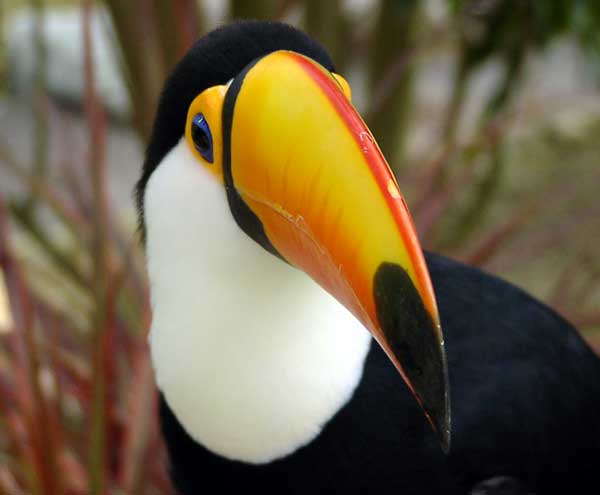|
Aechmea Coelestis
''Aechmea coelestis'' is a species of flowering plant in the genus ''Aechmea''. This is a species that is native Native may refer to: People * Jus soli, citizenship by right of birth * Indigenous peoples, peoples with a set of specific rights based on their historical ties to a particular territory ** Native Americans (other) In arts and entert ... to southeastern Brazil from Espírito Santo to Santa Catarina. Cultivars Cultivars include: Retrieved 11 October 2009 * ''Aechmea'' 'Beads of Coral' * ''Aechmea'' 'Golden Beads' * ''Aechmea'' 'Hal Ellis' * ''Aechmea'' 'Mauve Beads' * ''Aechmea'' 'Mondamin' * ''Aechmea'' 'Pink Beads' References coelestis Fl ...[...More Info...] [...Related Items...] OR: [Wikipedia] [Google] [Baidu] |
Species
In biology, a species is the basic unit of Taxonomy (biology), classification and a taxonomic rank of an organism, as well as a unit of biodiversity. A species is often defined as the largest group of organisms in which any two individuals of the appropriate sexes or mating types can reproduction, produce Fertility, fertile offspring, typically by sexual reproduction. Other ways of defining species include their karyotype, DNA sequence, morphology (biology), morphology, behaviour or ecological niche. In addition, paleontologists use the concept of the chronospecies since fossil reproduction cannot be examined. The most recent rigorous estimate for the total number of species of eukaryotes is between 8 and 8.7 million. However, only about 14% of these had been described by 2011. All species (except viruses) are given a binomial nomenclature, two-part name, a "binomial". The first part of a binomial is the genus to which the species belongs. The second part is called the specifi ... [...More Info...] [...Related Items...] OR: [Wikipedia] [Google] [Baidu] |
Flowering Plant
Flowering plants are plants that bear flowers and fruits, and form the clade Angiospermae (), commonly called angiosperms. They include all forbs (flowering plants without a woody stem), grasses and grass-like plants, a vast majority of broad-leaved trees, shrubs and vines, and most aquatic plants. The term "angiosperm" is derived from the Greek words ἀγγεῖον / ('container, vessel') and σπέρμα / ('seed'), meaning that the seeds are enclosed within a fruit. They are by far the most diverse group of land plants with 64 orders, 416 families, approximately 13,000 known genera and 300,000 known species. Angiosperms were formerly called Magnoliophyta (). Angiosperms are distinguished from the other seed-producing plants, the gymnosperms, by having flowers, xylem consisting of vessel elements instead of tracheids, endosperm within their seeds, and fruits that completely envelop the seeds. The ancestors of flowering plants diverged from the common ance ... [...More Info...] [...Related Items...] OR: [Wikipedia] [Google] [Baidu] |
Genus
Genus ( plural genera ) is a taxonomic rank used in the biological classification of living and fossil organisms as well as viruses. In the hierarchy of biological classification, genus comes above species and below family. In binomial nomenclature, the genus name forms the first part of the binomial species name for each species within the genus. :E.g. '' Panthera leo'' (lion) and '' Panthera onca'' (jaguar) are two species within the genus ''Panthera''. ''Panthera'' is a genus within the family Felidae. The composition of a genus is determined by taxonomists. The standards for genus classification are not strictly codified, so different authorities often produce different classifications for genera. There are some general practices used, however, including the idea that a newly defined genus should fulfill these three criteria to be descriptively useful: # monophyly – all descendants of an ancestral taxon are grouped together (i.e. phylogenetic analysis should c ... [...More Info...] [...Related Items...] OR: [Wikipedia] [Google] [Baidu] |
Aechmea
''Aechmea'' is a genus of flowering plants in the family Bromeliaceae (subfamily Bromelioideae). The name comes from the Greek ''aichme'', meaning "spear". Suggested pronunciations include and . ''Aechmea'' comprises eight subgenera and around 250 species distributed from Mexico through South America and the Caribbean. Most of the species in this genus are epiphytes. Subgenera Subgenera include: * ''Aechmea'' subg. ''Aechmea'' Baker * ''Aechmea'' subg. ''Chevaliera'' (Gaudichaud ex Beer) Baker * ''Aechmea'' subg. ''Lamprococcus'' (Beer) Baker * ''Aechmea'' subg. ''Macrochordion'' (De Vriese) Baker * ''Aechmea'' subg. ''Ortgiesia'' (Regel) Mez * ''Aechmea'' subg. ''Platyaechmea'' (Baker) Baker * ''Aechmea'' subg. ''Podaechmea'' Mez * ''Aechmea'' subg. ''Pothuava'' (Baker) Baker * ''Aechmea'' subg. ''Streptocalyx'' ined. Species , Plants of the World Online listed the following species: {{Columns-list, colwidth=22em, *'' Aechmea abbreviata'' {{small, L.B.Sm. *''Aechm ... [...More Info...] [...Related Items...] OR: [Wikipedia] [Google] [Baidu] |
Native Plant
In biogeography, a native species is indigenous to a given region or ecosystem if its presence in that region is the result of only local natural evolution (though often popularised as "with no human intervention") during history. The term is equivalent to the concept of indigenous or autochthonous species. Every wild organism (as opposed to a domesticated organism) is known as an introduced species within the regions where it was anthropogenically introduced. If an introduced species causes substantial ecological, environmental, and/or economic damage, it may be regarded more specifically as an invasive species. The notion of nativity is often a blurred concept, as it is a function of both time and political boundaries. Over long periods of time, local conditions and migratory patterns are constantly changing as tectonic plates move, join, and split. Natural climate change (which is much slower than human-caused climate change) changes sea level, ice cover, temperature, and r ... [...More Info...] [...Related Items...] OR: [Wikipedia] [Google] [Baidu] |
Brazil
Brazil ( pt, Brasil; ), officially the Federative Republic of Brazil (Portuguese: ), is the largest country in both South America and Latin America. At and with over 217 million people, Brazil is the world's fifth-largest country by area and the seventh most populous. Its capital is Brasília, and its most populous city is São Paulo. The federation is composed of the union of the 26 states and the Federal District. It is the largest country to have Portuguese as an official language and the only one in the Americas; one of the most multicultural and ethnically diverse nations, due to over a century of mass immigration from around the world; and the most populous Roman Catholic-majority country. Bounded by the Atlantic Ocean on the east, Brazil has a coastline of . It borders all other countries and territories in South America except Ecuador and Chile and covers roughly half of the continent's land area. Its Amazon basin includes a vast tropical forest, ho ... [...More Info...] [...Related Items...] OR: [Wikipedia] [Google] [Baidu] |
Espírito Santo
Espírito Santo (, , ; ) is a state in southeastern Brazil. Its capital is Vitória, and its largest city is Serra. With an extensive coastline, the state hosts some of the country's main ports, and its beaches are significant tourist attractions. The capital, Vitória, is located on an island, which borders the municipalities of Vila Velha, Cariacica and Serra. These municipalities plus the outer cities of Fundão and Guarapari constitute the state's main metro area. In the northern extremes of Espírito Santo is Itaúnas, in the municipality of Conceição da Barra, which is a tourist location known for its sand dunes and forró tradition. The Captaincy of Espírito Santo was carved out of the Captaincy of Bahia in the 18th century, during the colonial rule of Brazil, and named after a 16th-century captaincy covering roughly the same area of coast. Following the elevation of Brazil to a constituent kingdom of United Kingdom of Portugal, Brazil and the Algarve ... [...More Info...] [...Related Items...] OR: [Wikipedia] [Google] [Baidu] |
Santa Catarina (state)
Santa Catarina (, ) is a state in the South Region of Brazil. It is the 7th smallest state in total area and the 11th most populous. Additionally, it is the 9th largest settlement, with 295 municipalities. The state, with 3.4% of the Brazilian population, generates 3.8% of the national GDP. Santa Catarina is bordered by Paraná to the north, Rio Grande do Sul to the south, the Atlantic Ocean to the east, and the Argentine province of Misiones to the west. The coastline is over 450 km, i.e., about half of Portugal's mainland coast. The seat of the state executive, legislative and judiciary powers is the capital Florianópolis. Joinville, however, is the most populous city in the state. Besides Espírito Santo, Santa Catarina is the only state whose capital is not the most populous city. South of the Tropic of Capricorn, situated in the planet's southern temperate zone, the state has a humid subtropical climate (''Cfa'') in the east and west and an oceanic climate (''Cfb' ... [...More Info...] [...Related Items...] OR: [Wikipedia] [Google] [Baidu] |
Flora Of Brazil
The wildlife of Brazil comprises all naturally occurring animals, plants, and fungi in the South American country. Home to 60% of the Amazon Rainforest, which accounts for approximately one-tenth of all species in the world, Brazil is considered to have the greatest biodiversity of any country on the planet. It has the most known species of plants (55,000), freshwater fish (3,000), and mammals (over 689). It also ranks third on the list of countries with the most bird species (1,832) and second with the most reptile species (744). The number of fungal species is unknown but is large.Da Silva, M. and D.W. Minter. 1995. ''Fungi from Brazil recorded by Batista and Co-workers''. Mycological Papers 169. CABI, Wallingford, UK. 585 pp. Approximately two-thirds of all species worldwide are found in tropical areas, often coinciding with developing countries such as Brazil. Brazil is second only to Indonesia as the country with the mo ... [...More Info...] [...Related Items...] OR: [Wikipedia] [Google] [Baidu] |



.jpg)

